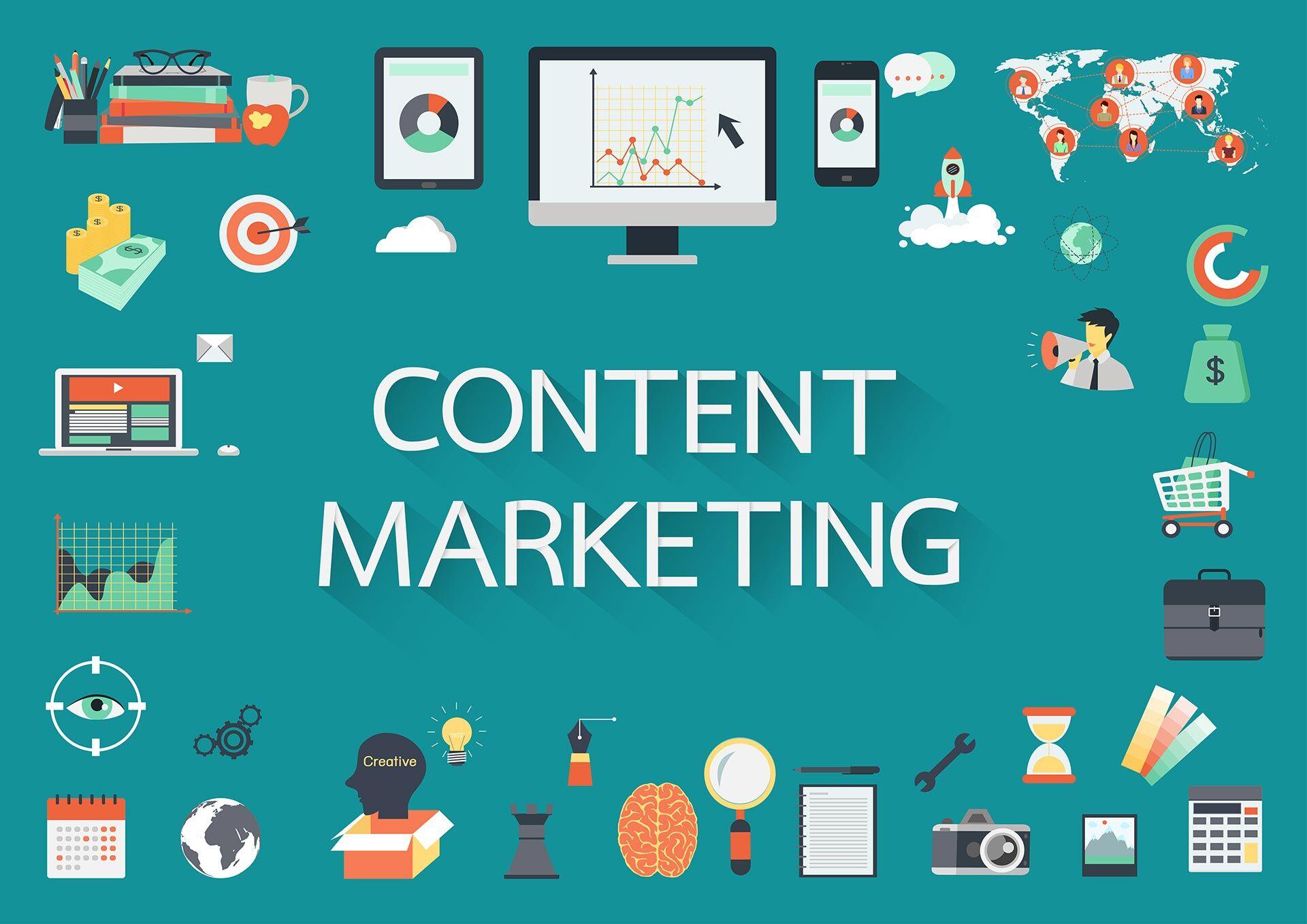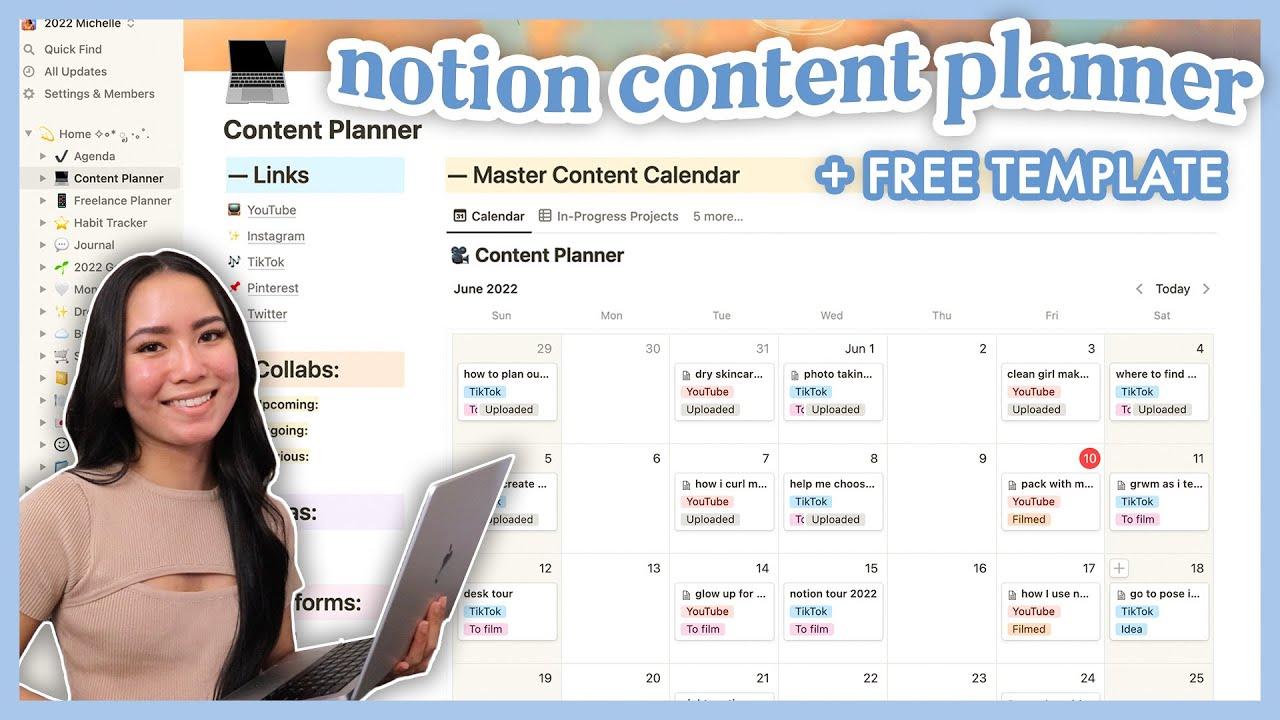Introduction: Unlocking the Power of Content Marketing
In today’s digital landscape, where consumers are bombarded with endless advertisements and promotional messages, standing out can feel like an uphill battle. Enter content marketing—a game-changing approach that not only captivates your audience but also builds lasting relationships with them. So, what exactly is content marketing? Simply put, it’s the art of creating valuable, relevant content to attract, engage, and ultimately convert your target audience. Whether you’re a small business owner, a budding entrepreneur, or just someone curious about the marketing world, understanding the fundamentals of content marketing can be your secret weapon. In this beginner’s guide, we’ll break down the essentials, explore effective strategies, and show you how to harness the power of storytelling to elevate your brand. Get ready to transform the way you connect with your audience—it’s time to dive into the world of content marketing!
Understanding the Essence of Content Marketing
Content marketing is more than just a buzzword; it’s a strategic approach that focuses on creating valuable, relevant content to attract and engage a specific audience. The essence of content marketing lies in its ability to build trust and establish relationships with potential customers. Rather than pushing a hard sell, it invites the audience into a conversation, fostering a sense of community and loyalty.
The foundation of effective content marketing is understanding the needs and preferences of your target audience. By creating content that resonates with them, you can address their pain points, answer their questions, and provide solutions. This not only positions your brand as an authority in your industry but also encourages audience retention and repeat visits.
Another key aspect is the diversity of content formats. Content marketing isn’t limited to blog posts; it includes videos, infographics, podcasts, social media posts, and more. Each format can serve a different purpose and appeal to various segments of your audience. Consider the following types:
- Blog Posts: In-depth articles that inform or entertain.
- Videos: Engaging visual content that can explain complex topics.
- Infographics: Visual representations of data that simplify information.
- Podcasts: Audio content that allows for storytelling and in-depth discussions.
- Social Media Posts: Quick updates, promotions, or engaging snippets that connect with users.
Moreover, measuring the success of your content marketing efforts is crucial. Metrics such as website traffic, engagement rates, and conversion rates provide insights into how well your content resonates with your audience. Regular analysis allows you to refine your strategy and adapt to changing consumer behaviors. Here’s a simple table showcasing key performance indicators (KPIs) for content marketing:
| KPI | Description |
|---|---|
| Traffic | Number of visitors to your content. |
| Engagement | Likes, shares, and comments on your content. |
| Conversion Rate | Percentage of visitors who take the desired action. |
| SEO Rankings | Position of your content in search engine results. |
Ultimately, successful content marketing is about creating a compelling narrative that speaks to the heart of your audience. By focusing on their needs and preferences, diversifying your content types, and continually measuring your success, you can harness the true power of content marketing to drive your business forward.

Why Content Marketing Matters for Your Business Growth
In today’s digital landscape, content marketing has emerged as a cornerstone for businesses aiming to thrive and evolve. It’s not merely about creating and sharing content; it’s about building connections, establishing authority, and driving meaningful engagement. When executed effectively, content marketing can significantly amplify your brand’s visibility and reach.
Here are a few reasons why investing in content marketing is essential for your business growth:
- Enhanced Brand Awareness: Regularly publishing high-quality content helps put your brand in front of the right audience. This consistent presence cultivates awareness and helps potential customers remember your brand when they need your services.
- Increased Website Traffic: Valuable content naturally attracts more visitors. By optimizing your content for search engines, you can drive organic traffic to your site, turning casual readers into loyal customers.
- Building Trust and Credibility: Sharing insightful and informative content positions you as an industry expert. When audiences perceive your brand as trustworthy, they are more likely to engage with your offerings.
- Improved Customer Engagement: Engaging content encourages interaction. Whether it’s through blog comments, social media shares, or email subscriptions, fostering these conversations helps build a community around your brand.
Moreover, content marketing is a cost-effective strategy. Compared to traditional advertising, which often requires significant financial investment, content marketing can yield higher ROI over time. The table below highlights some key statistics that underscore the benefits of content marketing:
| Statistic | Impact |
|---|---|
| Content marketing generates 3 times more leads than traditional marketing. | Increased lead generation. |
| Companies with blogs get 97% more links to their websites. | Boosted online presence. |
| 70% of consumers prefer getting to know a company via articles rather than ads. | Higher audience engagement. |
Ultimately, content marketing is about creating value. When you focus on delivering content that resonates with your audience, you’re not just promoting products or services; you’re fostering relationships. This approach not only drives sales but also cultivates brand loyalty, ensuring that your customers keep coming back. Embracing content marketing is not just a choice; it’s a strategic move towards sustainable business growth.
Key Components of an Effective Content Marketing Strategy
Crafting a successful content marketing strategy requires a thorough understanding of its essential components. Each element plays a pivotal role in ensuring that your content resonates with the target audience while achieving broader marketing objectives. Here are some key elements to consider:
- Audience Research: Understanding who your audience is, their preferences, pain points, and behavior is crucial. Use tools like surveys, social listening, and analytics to gather insights that inform your content creation.
- Content Goals: Define what you want to achieve with your content. Whether it’s increasing brand awareness, generating leads, or boosting customer engagement, clear goals will guide your strategy.
- Content Types: Diversification is key. From blog posts and infographics to videos and podcasts, using a mix of content types can appeal to different segments of your audience. Consider what formats work best for your message and your audience’s preferences.
- Content Distribution: Creating great content is only half the battle. Determine the channels through which you will distribute your content. Social media, email newsletters, and your website are all important avenues to explore.
- Performance Metrics: Establish clear metrics to measure the success of your content. Track metrics like website traffic, engagement rates, and conversion rates to continuously refine your strategy.
Additionally, consider the role of consistency and brand voice. Maintaining a consistent posting schedule and a cohesive tone across all content reinforces your brand identity, making it easier for your audience to connect with you.
| Component | Description |
|---|---|
| Audience Research | Identifying who your audience is and what they care about. |
| Content Goals | Setting clear objectives for what your content should achieve. |
| Content Types | Diversifying formats to engage different audience segments. |
| Content Distribution | Choosing the right channels for sharing your content. |
| Performance Metrics | Measuring success to refine future strategies. |
Incorporating these elements into your content marketing strategy not only enhances its effectiveness but also builds a stronger relationship with your audience. Remember, the key lies in understanding and engaging your audience at every step of the way.
Identifying Your Target Audience for Maximum Impact
Understanding who your audience is can make or break your content marketing strategy. By identifying your target audience, you can tailor your messaging, tone, and content formats to resonate deeply with the people you want to reach. It’s like having a secret key that unlocks the potential for maximum engagement and conversion.
To pinpoint your ideal audience, consider diving into the following areas:
- Demographics: Age, gender, location, and education level can provide a baseline for understanding who your audience is.
- Psychographics: Look beyond basic demographics and explore interests, values, and lifestyles. Understanding what motivates your audience can help you craft more compelling content.
- Behaviors: Analyzing how your audience interacts with content online can reveal their preferences for formats, platforms, and timing.
Once you gather this information, it’s essential to create audience personas. These semi-fictional characters embody your target segments and help humanize the data you’ve collected. Each persona should include:
| Persona Name | Demographics | Interests | Content Preferences |
|---|---|---|---|
| Maria the Marketer | 30-40, Female, Urban | Digital Marketing, Networking | Webinars, Case Studies |
| Tom the Techie | 20-35, Male, Suburban | Gadgets, Gaming | Videos, Infographics |
| Lisa the Lifestyle Blogger | 25-45, Female, Urban/Suburban | Fashion, Travel | Blogs, Social Media Posts |
This structured approach not only sharpens your content strategy but also makes it easier to create campaigns that are relevant and engaging. stay dynamic; continually reassess your audience’s needs and behaviors. The more you adapt your content to what your audience desires, the more effective your marketing efforts will be.
Crafting Compelling Content That Engages and Converts
Creating content that not only draws attention but also drives action is the cornerstone of effective content marketing. To achieve this, it’s essential to understand your audience intimately. What are their pain points? What questions are they asking? By addressing these needs directly, you can craft messages that resonate deeply and encourage engagement. Remember, the more relevant your content is to your audience, the higher the likelihood of conversion.
Here are some key elements to consider when crafting your content:
- Value Proposition: Clearly articulate what value your content provides. It should solve a problem or fulfill a need that your audience has.
- Storytelling: People connect with stories. Use narratives to illustrate your points, making your content relatable and memorable.
- Visual Appeal: Incorporate images, infographics, or videos to make your content visually engaging. Visuals can enhance understanding and retention.
- Call-to-Action (CTA): Every piece of content should include a compelling CTA that guides your audience towards the next step—be it signing up, sharing, or making a purchase.
In addition to these elements, incorporating data-driven insights can further solidify your arguments and elevate your content. Consider using a simple comparison table to highlight key statistics or features relevant to your audience:
| Content Type | Engagement Rate | Ideal Length |
|---|---|---|
| Blog Posts | 2-5% | 1,500-2,500 words |
| Videos | 8-12% | Under 3 minutes |
| Infographics | 10-15% | N/A |
always be open to feedback and analytics. Track how your content performs and be willing to adapt your strategies accordingly. Regularly reviewing key metrics can help you refine your approach and ensure that your content continues to engage and convert effectively. Remember, crafting compelling content is an ongoing journey, and being attuned to your audience will guide you toward greater success.

Leveraging Different Content Formats to Your Advantage
In the ever-evolving landscape of digital marketing, utilizing a variety of content formats can significantly enhance your outreach and engagement. Different audiences consume content in different ways, and by leveraging multiple formats, you can cater to a broader spectrum of preferences. Here are some effective strategies to consider:
- Blog Posts: Create informative and engaging articles that address specific pain points or questions your audience may have. Use SEO techniques to improve visibility and drive organic traffic.
- Infographics: These visually appealing tools can simplify complex information and make it more digestible. Infographics are easily shareable and can boost your brand’s visibility across social media platforms.
- Videos: With video content on the rise, incorporating it into your strategy can greatly enhance engagement. Tutorials, webinars, and behind-the-scenes glimpses can humanize your brand and build trust.
- Podcasts: Leverage the growing popularity of audio content by creating podcasts that provide valuable insights and stories related to your industry. This format allows users to consume content on the go, increasing accessibility.
- Social Media Posts: Utilize platforms like Instagram, Twitter, and Facebook to share bite-sized content that drives interaction. Utilize polls, stories, and live sessions to foster community engagement.
Incorporating a mix of these formats not only keeps your content fresh but also helps in reaching your audience where they are most active. Each format serves a unique purpose and resonates with different segments of your audience, so experimentation is key. For instance, while a detailed blog post may attract readers seeking in-depth knowledge, a quick, entertaining video might capture the attention of those looking for quick insights.
To illustrate the effectiveness of various formats, consider the following table that outlines the potential reach and engagement levels of different content types:
| Content Format | Potential Reach | Engagement Level |
|---|---|---|
| Blog Posts | High | Moderate |
| Infographics | Medium | High |
| Videos | Very High | Very High |
| Podcasts | Medium | High |
| Social Media Posts | Very High | Variable |
By strategically mixing these formats, you can not only keep your audience engaged but also enhance your brand’s authority and reach. Remember to analyze the performance of each format and adjust your strategy accordingly to maximize impact.

The Importance of SEO in Your Content Marketing Journey
In the digital landscape, effectively reaching your target audience requires more than just captivating content; it demands a strategic approach to search engine optimization. SEO serves as the backbone of your content marketing efforts, enabling your content to rise above the noise and connect with the right people at the right time. When executed correctly, SEO not only increases visibility but also enhances the overall user experience on your site.
Understanding the synergy between SEO and content marketing is crucial for any business looking to thrive online. Here are some key reasons why integrating SEO into your content strategy is essential:
- Increased Organic Traffic: By optimizing your content with relevant keywords, you can attract more visitors from search engines without paying for ads.
- Better User Engagement: Quality SEO practices lead to improved site speed, mobile responsiveness, and a better overall user experience, which keeps visitors on your site longer.
- Higher Conversion Rates: When your content is easily discoverable and resonates with your audience, the chances of converting visitors into customers significantly increase.
Moreover, SEO helps to build brand credibility. When your content ranks high on search engine results pages (SERPs), it signals to users that your brand is trustworthy and authoritative in your niche. This trust can pave the way for increased brand loyalty and repeat business. To illustrate the relationship between SEO and content effectiveness, consider the following table:
| SEO Strategy | Content Marketing Benefit |
|---|---|
| Keyword Research | Identifies audience needs and interests. |
| On-Page Optimization | Improves content structure and readability. |
| Link Building | Enhances authority and referral traffic. |
consider that SEO is not a one-time task; it’s an ongoing process that evolves with your audience’s search behaviors and preferences. By continually optimizing your content and staying updated with SEO trends, you can ensure that your marketing efforts remain relevant and effectively aligned with your business goals. Investing time and resources into SEO will not only benefit your content marketing journey but will also contribute to your long-term success in the digital space.

Measuring Success: Key Metrics to Track Your Content Performance
Tracking the right metrics is essential for understanding the impact of your content marketing efforts. Without clear indicators, you may find yourself navigating in the dark. Here are the key metrics you should focus on to measure your content performance effectively:
- Traffic Volume: This measures the number of visitors to your content. Use tools like Google Analytics to track page views and unique visitors.
- Engagement Rate: This indicates how users interact with your content. Look for metrics such as average time on page, bounce rate, and social shares.
- Conversion Rate: This metric helps you determine how well your content drives desired actions, whether it’s signing up for a newsletter, making a purchase, or downloading a resource.
- SEO Performance: Monitor organic search traffic and keyword rankings to see how your content is performing in search engines.
- Return on Investment (ROI): Calculate the financial return of your content relative to the costs incurred in creating and promoting it.
When analyzing these metrics, it’s crucial to set specific goals for each piece of content. For instance, if your aim is to increase brand awareness, focus on traffic volume and engagement rate. Conversely, for lead generation, the conversion rate will be your primary concern. Regularly reviewing these metrics allows you to adapt your strategy and optimize your content accordingly.
Comparison Table of Key Metrics:
| Metric | What It Measures | Tools to Use |
|---|---|---|
| Traffic Volume | Visitors to your content | Google Analytics |
| Engagement Rate | User interaction | Social Media Insights |
| Conversion Rate | Actions taken by users | Google Analytics, CRM tools |
| SEO Performance | Search visibility | Google Search Console |
| ROI | Financial return | Excel, ROI calculators |
successful content marketing relies on the ability to measure and analyze performance metrics regularly. By understanding what each metric signifies, you can make informed decisions that enhance your content strategy and drive better results. The key is to be proactive in your approach, continually assessing what works and what doesn’t.

Building a Consistent Content Calendar for Long-Term Success
Creating a content calendar is essential for anyone serious about content marketing. It acts as a roadmap, guiding you on what to publish and when, ensuring that your strategy remains cohesive and aligned with your business goals. By planning ahead, you can avoid the last-minute scramble for ideas, which often leads to rushed content that lacks quality.
To build a successful content calendar, consider the following key elements:
- Frequency: Determine how often you want to publish content. This could be daily, weekly, or monthly, depending on your resources and audience demands.
- Types of Content: Mix it up! Incorporate blogs, videos, infographics, and social media posts to keep your audience engaged.
- Theme or Focus: Align your content with seasonal themes, holidays, or specific campaigns to make it more relevant and timely.
- Analytics Review: Regularly review your performance metrics to adjust your strategy based on what works and what doesn’t.
Using a simple table can help you visualize your calendar better. Here’s a sample structure you might consider:
| Date | Content Type | Topic/Title | Status |
|---|---|---|---|
| 01/10/2023 | Blog Post | Top 10 Content Marketing Tips | Scheduled |
| 01/15/2023 | Video | Creating Engaging Social Media Posts | In Progress |
| 01/20/2023 | Infographic | The Stats Behind Effective Content Marketing | Ideas |
Furthermore, incorporate flexibility into your calendar. While consistency is critical, the ability to adapt to current trends, audience feedback, and unexpected events can give you a significant advantage. Monitor industry news and social platforms to stay ahead of the curve and adjust your schedule accordingly.
ensure that all team members involved in content creation have access to the calendar. This promotes collaboration and keeps everyone aligned with the overarching strategy. Regular check-ins and brainstorming sessions can also spark creativity and enhance the quality of your content.

Tips and Tools to Enhance Your Content Marketing Efforts
To truly amplify your content marketing strategy, it’s essential to embrace a mix of creativity and practicality. Here are some effective tips to get you started:
- Know Your Audience: Understanding who you’re speaking to can transform your content. Create detailed buyer personas to tailor your messaging.
- Quality Over Quantity: It’s better to publish fewer, high-quality pieces than a flood of mediocre content. Focus on delivering value!
- Create a Content Calendar: Planning your content in advance not only helps you stay organized but also ensures consistency across your platforms.
- SEO Optimization: Make sure your content is optimized for search engines. Research keywords and incorporate them naturally into your writing.
Now let’s talk about some tools that can take your content marketing to the next level:
| Tool | Purpose |
|---|---|
| BuzzSumo | Content research and trend analysis. |
| Canva | Graphic design for creating stunning visuals. |
| Hootsuite | Social media management and scheduling. |
| Google Analytics | Monitoring website traffic and user behavior. |
In addition, consider leveraging social media platforms to promote your content. Posting across various channels not only increases your reach but also invites interaction and engagement. Remember to share snippets, quotes, or eye-catching graphics to draw attention.
don’t underestimate the power of user-generated content. Encouraging your audience to share their experiences related to your brand can provide authentic testimonials and foster community. Engage with your audience, invite feedback, and showcase their contributions to build trust and loyalty.
Frequently Asked Questions (FAQ)
Q&A: What is Content Marketing? Best Guide for Beginners
Q1: What exactly is content marketing?
A1: Great question! Content marketing is all about creating and sharing valuable content to attract and engage your target audience. Rather than pushing a hard sell, it focuses on providing useful, informative, or entertaining content that meets the needs of your audience. Think of it as building a relationship with potential customers through blogs, videos, podcasts, and more!
Q2: Why should beginners care about content marketing?
A2: If you’re looking to grow your business or personal brand, content marketing is essential! It helps you establish authority in your niche, connect with your audience, and ultimately drive sales. Plus, it’s often more cost-effective than traditional advertising. By starting your content marketing journey now, you’ll set yourself up for long-term success!
Q3: What types of content can be used in content marketing?
A3: The possibilities are endless! You can create blog posts, infographics, videos, podcasts, social media posts, ebooks, and more. The key is to choose formats that resonate with your target audience and align with your brand’s message. Diversifying your content can keep your audience engaged and coming back for more.
Q4: How do I start with content marketing as a beginner?
A4: Start by clearly defining your target audience and understanding their needs. Next, choose the content formats that will best reach them. Create a content calendar to plan and organize your content. And most importantly, focus on delivering value—whether that’s solving a problem, answering questions, or simply entertaining!
Q5: Is content marketing really effective?
A5: Absolutely! In fact, businesses that prioritize content marketing see significantly higher ROI compared to those that don’t. It helps improve search engine rankings, generates leads, and builds brand loyalty. When done right, content marketing can transform casual visitors into loyal customers!
Q6: How often should I publish content?
A6: Consistency is key! It’s better to publish high-quality content less frequently than to churn out mediocre posts every day. Find a rhythm that works for you—whether that’s once a week or twice a month—and stick to it. Your audience will appreciate regular updates, and it’ll help keep your brand top-of-mind.
Q7: Can I measure the success of my content marketing efforts?
A7: Definitely! You can track various metrics to measure success, such as website traffic, social media engagement, email open rates, and conversion rates. Tools like Google Analytics can provide insights into how your content is performing. Use this data to refine your strategy and improve your future content.
Q8: What are some common mistakes beginners make in content marketing?
A8: One common mistake is focusing too much on promotion rather than providing value. It’s important to create content that addresses your audience’s needs instead of just pushing your products. Other pitfalls include neglecting SEO, ignoring audience engagement, and failing to analyze their results. Learning from these mistakes will help you grow and improve!
Q9: How can I stand out in a crowded content marketing space?
A9: To stand out, focus on authenticity and storytelling. Share your unique perspective, experiences, or insights that resonate with your audience. Create high-quality, visually appealing content and don’t shy away from showing your personality. Building a distinct brand voice will help you connect with your audience and keep them coming back!
Q10: Any final tips for beginners in content marketing?
A10: Start small, stay consistent, and always prioritize the needs of your audience. Don’t be afraid to experiment with different content types and formats. Keep learning, be adaptable, and remember that content marketing is a marathon, not a sprint. With time, effort, and dedication, you’ll see great results!
By embracing content marketing, you’re not just promoting your brand; you’re creating a community. So why wait? Dive in and start crafting content that captivates and converts!
Final Thoughts
Wrapping It Up: Your Journey into Content Marketing
Congratulations! You’ve just taken your first step into the exciting world of content marketing. By now, you should have a solid understanding of what content marketing is and why it’s an essential tool for businesses of all sizes. Remember, it’s not just about creating content; it’s about telling your story, connecting with your audience, and providing value that keeps them coming back for more.
As you embark on your content marketing journey, keep in mind that growth takes time. Be patient, stay consistent, and don’t hesitate to experiment with different formats and strategies until you find what resonates best with your audience. Whether it’s engaging blog posts, captivating videos, or informative infographics, your creativity is your greatest asset.
So, why wait? Get started today! Develop your content calendar, brainstorm fresh ideas, and start crafting compelling pieces that reflect your brand’s voice. The world of content marketing is vast, and the possibilities are endless. Embrace the process, learn from your experiences, and soon enough, you’ll see how effective content marketing can transform your business.
If you have any questions or need further guidance, don’t hesitate to reach out. Here’s to your success in mastering content marketing—let’s create something amazing together!



